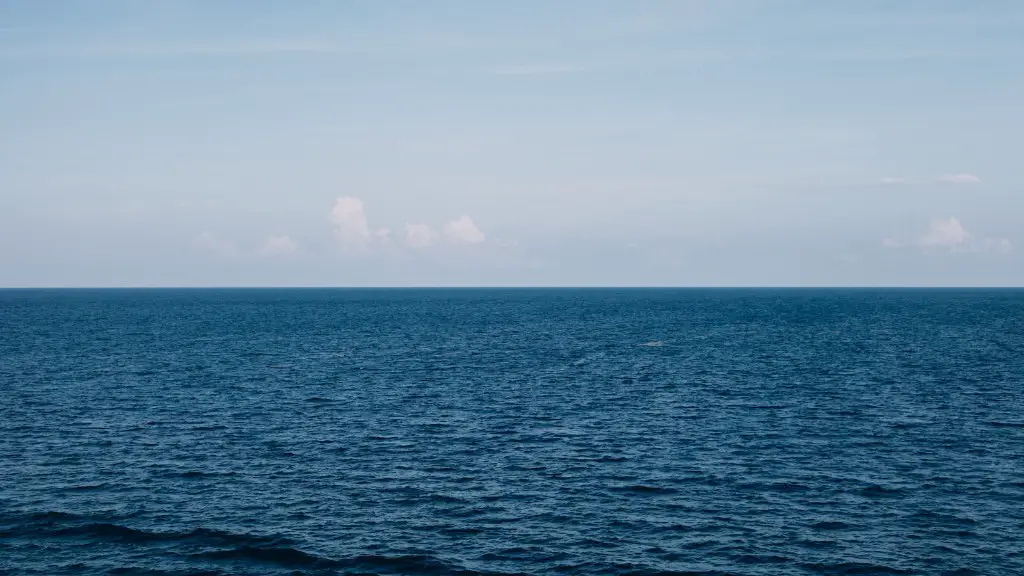What is the Dispute Over the South China Sea?
The South China Sea is a vital maritime region of the Pacific Ocean and is an essential shipping lane for global trade. It is also the subject of a long-running territorial dispute that could have far-reaching implications for the politics of the region. In its simplest form, the dispute involves a number of neighbouring states that have competing claims over different parts of the South China Sea.
At the heart of the dispute is the ‘nine-dash line’. This is a line that was marked on Chinese maps to indicate its claim of sovereignty over much of the South China Sea. This has been contested by the other countries in the region, including the Philippines, Vietnam, Malaysia, Brunei and Taiwan. All five of these countries have their own separate claims in the South China Sea, based on historical territorial rights or established Exclusive Economic Zones (EEZs).
Why is China Building Islands in South China Sea?
The Chinese government has sought to bolster its claims in the South China Sea by embarking on an ambitious program of island building. This began in 2013, when China started to construct artificial Islands on some of the uninhabited islets and reefs that lie within its nine-dash line.
China has justified this move by claiming it has a right to reclaim land in the South China Sea in order to build infrastructure and protect its own security interests. It maintains that this is in line with international law, which permits coastal states to construct artificial islands in their Exclusive Economic Zones (EEZs).
However, other countries in the region have been highly critical of China’s actions. They argue that China’s island building have been aggressive, exploitative and in flagrant violation of international law. They point to China’s construction of military bases on the artificial islands, which they say could be used to threaten their own security and sovereignty.
What are the Potential Consequences of China’s Island-building Program?
The potential consequences of China’s island-building program are far-reaching and could potentially destabilize the region. Experts warn that the increasing militarization of the South China Sea, with China’s artificial islands backed up by a network of military bases, could increase the risk of conflict and tension in the region.
They also point to the potential environmental damage caused by China’s island-building program. This includes the destruction of vital coral reefs and other marine ecosystems, on which many of the countries in the region depend for their food, tourism and income.
Furthermore, there are fears that China’s island-building program could exacerbate an already fraught and complex territorial dispute in the South China Sea. This could further erode regional trust and cooperation.
Have China’s Actions Been Challenged by Other Countries?
Yes. A number of countries in the South China Sea region, including the United States, Australia and Japan, have expressed serious concern over China’s island-building activities. They have called on China to halt all construction and to respect the rights and interests of other countries in the South China Sea.
The most prominent legal challenge to China’s actions was lodged by the Philippines in 2013. The Philippines took China to the Permanent Court of Arbitration, in The Hague, seeking recognition of its territorial claim in the South China Sea.
In 2016, the court ruled in favour of the Philippines, finding that none of the islands in the South China Sea were entitled to an Exclusive Economic Zone (EEZ) or continental shelf. This means that any claims of sovereignty over the South China Sea by China are invalid.
Why Has China Ignored International Criticism?
China has continued with its program of island-building even in the face of international criticism and legal defeat. It is difficult to understand why China has chosen to ignore the ruling of the Permanent Court of Arbitration and flout the warnings of the international community.
One explanation for China’s intransigence may be its increasing economic and military power. It is possible that China believes that its increasing strength will be sufficient to allow it to act without fear of consequence.
In addition, China may be emboldened by its belief that the other countries in the South China Sea region are too weak and divided to effectively challenge its claims. Consequently, it may have decided to press on with its island-building program in the hope that it can eventually force the other countries to accept its position.
What Role has the United States Played in the Dispute?
The United States has been a vocal critic of China’s actions in the South China Sea. It has deployed its own military forces to the region to conduct ‘freedom of navigation operations’, which are intended to challenge China’s territorial claims.
The US has also sought to rally regional support for its position. It has forged naval agreements with other countries in the South China Sea and encouraged them to pursue diplomatic initiatives with China.
However, the US has fallen short of imposing additional economic sanctions on China. This may be due to its own economic interests in the region; the US was a major beneficiary of the Obama administration’s Asian Pivot strategy and does not want to jeopardise its economic ties with China.
Has the Dispute Changed Regional Politics?
The dispute over the South China Sea has affected the political landscape of the region. Many of the countries in the South China Sea region have sought closer ties with the United States in order to seek protection from China’s increasing assertiveness.
At the same time, some countries have sought to strike a balance between the US and China by engaging in diplomatic and economic exchanges with both countries. This is particularly true of countries like Malaysia, with its ambitious ‘Look East’ policy, and the Philippines, with its ‘rebalancing’ strategy towards Asia.
These shifts in regional politics have been accompanied by a marked increase in tension and mistrust in the region. China’s rejection of the ruling of the Permanent Court of Arbitration has further eroded trust between China and other countries in the South China Sea.
What are the Chances of a Resolution?
The dispute over the South China Sea has been going on for decades and shows no sign of abating. It is difficult to predict the chances of a resolution, particularly given China’s increasing assertiveness and the growing mistrust between the countries in the region.
However, there are some positive developments. The recent push for a Code of Conduct in the South China Sea has been welcomed by the countries involved. This initiative could potentially lead to greater dialogue, cooperation and trust between the countries in the region. This would be an important step towards resolving the dispute.
At the same time, the countries in the region have also sought to pursue their own respective diplomatic initiatives. This includes efforts to engage China in direct, bilateral meetings. These meetings could be instrumental in facilitating a peaceful resolution to the dispute.
What Effect Has the Dispute Had on Global Trade?
The dispute over the South China Sea has had a significant impact on global trade. The region is home to vital shipping lanes and is responsible for around one-third of all shipping traffic. Any escalation of tension or disruption to trade in the area would have a serious knock-on effect on global trade.
Therefore, the international community has sought to ensure that the dispute remains largely confined to diplomatic dialogue and discussion. For example, International organizations like the United Nations have sought to actively promote dialogue and negotiations to help prevent the situation from escalating.
That said, the potential for increased military conflict remains a very real threat. In particular, there are fears that any military actions taken by China may provoke a reaction from other countries in the region; this could lead to a breakdown in diplomatic negotiations and a further deterioration in the situation.
How Has the Dispute Affected Regional Stability?
The dispute over the South China Sea has had a damaging effect on regional stability, with countries in the region increasingly reliant on external powers for protection and security.
This is especially true for countries like the Philippines and Vietnam, which are economically and militarily weaker than China and are particularly vulnerable to its growing assertiveness. By relying on external powers like the United States for protection, these countries may inadvertently be dragged into a conflict with China that they cannot control or influence.
Furthermore, the growing mistrust between the countries in the region is having a corrosive effect on regional stability. For example, the increasing Chinese military presence in the region has caused alarm among its neighbours and has made it harder for the countries to cooperate and work together.
What is the Future of the South China Sea?
The future of the South China Sea remains highly uncertain. The current situation of hostilities and mistrust is likely to remain in place for some time to come.
If no resolution to the dispute is found, then it is possible that China will continue to strengthen its presence in the region. This could lead to the further militarisation of the South China Sea and an increase in regional tension and instability.
On the other hand, it is possible that the countries in the region will be able to find a peaceful resolution to the dispute. This could lead to greater regional trust and cooperation, and more peaceful, prosperous and secure future for the South China Sea.


